“How much ya bench?”
If you’ve spent any more than a month in the gym, chances are you’ve been asked or have at least heard the phrase “how much ya bench?” The bench press is a strength staple and is considered one of the ultimate measures of gym prowess. But despite it’s popularity, proper technique, and more importantly, how to increase numbers on the bench, seem to be somewhat mystified to the average gym rat. Most guys will get up to around 225 lbs by just going in and benching regularly, and those that get anywhere near 315 lbs are considered freaks at most commercial gyms. But it doesn’t have to be this way! You too can build a big bench if you follow some basic tenets.
In the powerlifting world, we see guys benching 2-3 times their bodyweight or more very regularly. And in the NFL Combine, we see guys out of college repping out 225 lbs for 20-30+ reps. What do these guys do differently? Sure there’s the issue of superior genetics and possible steroid usage, but I think there’s more to it. Good bench pressers tend to know proper set up and technique, which is where most lifters go wrong right off the bat. Don’t get me wrong, I’m not saying that all college football players are stellar benchers in terms of technique; far from it. However, the average gymgoer’s bench press form is absolutely horrific, so just having decent technique automatically confers a big advantage. Furthermore, good benchers tend to be more aware of specialized set and rep schemes, protocols, and programs. Way too many lifters enter the gym with a blind eye and have no real method to their madness; they simply lift as much as they can every time they go into the gym or perform the same load, set, and rep scheme week in and week out.
In this post, I’ll go over everything from proper setup and form to different methodologies for increasing either maximum strength (1RM) or rep records (think NFL Combine), along with who should be using them.
Form
Grip Width
Grip width is going to be somewhat dependent on personal preference, but for our purposes let’s say somewhat narrower than what you may be used to. The traditional bodybuilding grip width where the arms are flared out to almost 90-degrees will definitely stress the pecs more, but this style won’t be optimal for building strength or sustaining shoulder longevity. Going too narrow can also bring your numbers down by taking the pecs out of the equation, however, the close grip bench press is a great support exercise for the standard bench.
What you’re looking for is for the upper arms to be at around a 45-degree angle to the body when at the bottom of the movement, and for the wrists to be directly over the elbows at the bottom of the rep.
Shoulder Blades
Scapular position is a commonly overlooked part of the bench press and one of the most challenging aspects for lifters learning the bench to maintain. You want to retract and depress the shoulder blades down into the bench. Think about rowing your shoulder blades back, screwing them into the bench, and keeping them there the entire time. You can do this by picking yourself up using the bar then getting them back and planting down on the bench, or by just working the blades back under you before unracking the bar. Make sure not to protract the scapulae or shrug the shoulders up during the movement, most people tend to do this at the top. Also, don’t allow the scaps to anteriorly tilt (shoulders round forward) – keep the chest up and the scaps stuck to the ribcage.
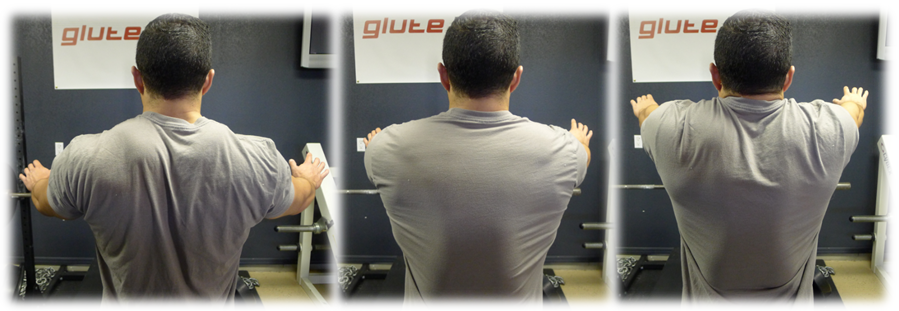
From left to right: good lockout position, poor lockout position with shoulders protracted, and poor lockout position with shoulder shrugged
Keep the shoulder blades back and down and screwed into place, and keep your weight on the upper back throughout the motion. It should be mentioned that some powerlifting organizations are okay with the head coming off the bench, whereas others don’t allow it.
Foot Position
During the bench press, the chest is obviously the primary muscle at work (especially with the raw bench press), but the bench press is really a full body lift when it comes down to it. The feet should be planted down firmly and in full contact with the ground. And during the rep you should push your heels into the ground and create tension throughout the entire body, which brings up the next point
Body Tension
As mentioned, the body should be tense during the entire rep. In fact, many powerlifters believe that the set-up is more uncomfortable than the lift itself. Once the shoulders are planted down, the feet are in solid contact with the floor, and the buttocks is down on the bench, you’re ready for your first rep. After unracking the bar, take a deep breath, hold the air tight in your core, grip the bar firmly and push your feet into the ground to create body tension, otherwise known as staying tight. You do not want the legs to be squirmy during the movement. Tense the glutes and hold a strong spinal arch.
Bar Path
So how does the bar actually travel in space? Well, the most common mistake lifters make is that they come directly down to their chest which will force the elbows into that unwanted flair mentioned earlier. At the bottom of the lift, the bar should be positioned just below the nipple line. On the way up, the bar should travel in a slight arc and end directly above the nipple line at the top. Think of rowing the body to the bar at the bottom of the movement – this will help you hold the arch and lower the bar properly. Pause for a moment on the chest – this makes the movement more challenging but it will build a stronger bench in the long-run. When reversing the movement, think leg drive and think of pushing the body into the bench, away from the bar. This will help you raise the bar properly.
Goals
Your training regimen will be dependent on your individual goals. For example, if limit (maximal) strength is what you’re most interested in improving, then you’re going to have to lift heavy. However, if you’re looking to increase your repetition strength, you’ll need to utilize higher reps with lighter loads.
Maximum Strength (1RM) – Building maximum strength refers to increasing the total poundage someone can lift. There are several ways to go about this but just going into the gym and maxing out every week certainly is not one of them. If you max out every week, you’ll definitely build up some strength, especially if you’re newer to lifting, but after a while you’ll plateau and stagnate. That’s where specialized set and rep schemes come into play. Here are some favorites:
- Straight Sets – With straight sets, you’re going to use the same weight and perform the same number of reps, for the prescribed number of sets. I’ve found 3 to 5 sets of 1 to 5 reps to be most effective when using this method. You want to lift heavy enough that you approach failure, but there should usually be a rep or two left in the tank. The most commonly utilized straight sets are 3 sets of 5 reps or 5 sets of 5 reps, but keep in mind that 5 sets of 5 can be quite taxing if you bench press multiple times per week.
- Ascending Sets – This method is commonly employed for hypertrophy, but when used with lower rep schemes it can be very effective for increasing strength. I like to use this on weeks where I am trying out a new weight. Since you’re going up in weight on each set, you won’t be as fatigued on the last set when compared to straight sets, which will allow you to go for a personal record (PR) on your last set. This method is similar to straight sets in that the sets and reps stay the same (ex: 3 sets of 5 reps), but the load increases each set.
- Pause Reps – Pause reps look like normal reps but are held in the bottom position for 1 to 3 seconds (preferably 3). This pause takes much of the stretch shortening cycle (SSC) out of the equation and forces you to lift the weight without the elasticity of the muscle and stretch reflex helping out. This indeed makes the lift much harder, and while you’ll be handling less weight than you would with touch-and-go reps, it will ultimately build much more strength and allow you to hone your technique.
- Speed Work – One of the most common methods of training for increasing maximal strength employed by high level powerlifters is to perform speed work. This is ironic since this form of training does not follow the rule of specificity. Powerlifting is by nature very slow, since maximal force production will occur when mass is very high and acceleration is very low. However, you’re going to use lighter loads and hoist the bar with as much acceleration as possible, staying far away from failure. An example of speed work would be to take 60% of your 1RM and perform 8 sets of 3 repetitions as explosively as possible with around one minute in between sets.
- Specialty Work – Specialty work refers to various techniques such as accommodating resistance, which involves using bands, chains, weight releasers, or a sling shot, as well as partials which involves performing top end movements such as board presses, floor presses, and rack presses.
- Many of these techniques require additional equipment and are beyond the scope of this article, except for the floor press, which may be used to shorten the range of motion, allowing lifters to handle more weight than they can on a standard bench press. The floor press also builds good lockout strength. A floor press is just a bench press performed lying on the floor.
Rep Records – Rep records typically come to mind when training for events like the NFL Combine, the Tactical Strength challenge, or the SPARQ high school challenge, which each have a bench press for max reps component to them. Increasing your bench press rep record can also help with max push up tests which are required by the military, most law enforcement agencies, and anyone looking for a good ego boost.
- Max Strength First – The one method that will most simply boost your ability to rep out a certain weight is just building your max strength. Getting 185 lbs as many times as possible (SPARQ challenge) is only an endurance task for someone that is strong enough to lift the weight in the first place. Repping with 225 lbs is much easier when your max is 315 lbs compared to 275 lbs.
- Clusters – Clusters are heavy singles, doubles, or triples performed several times in succession but resting around 10-20 seconds or so in between. The difference between these and straight sets are the shorter rest periods, which will keep you from going as heavy, but will help increase work capacity. A cluster for someone training for a 185lb repetiton max might look something like this: 205 lbs x 2 reps x 4 rounds with 10-seconds of rest separating every two reps. That’s 1 cluster, and up to 4 clusters may be performed in a session, making sure to rest 2 to 3 minutes between clusters.
- Reverse Rep Ladder – Reverse rep ladders are done with straight weight and performed for a certain number of reps (let’s say 8), with each subsequent set decreasing in reps. For example, let’s say a lifter performs 250 lbs for 8 reps on his first set. He’d perform 7 reps on his second set, 6 on his third, and so on, until 1 repetition was reached. The goal is to achieve this task by resting as little as possible in between sets, which is an excellent way to build work capacity and strength endurance.
- Drop Sets – A drop set is essentially the opposite of an ascending set and involves dropping down in weight rather than increasing load on each subsequent set. However, instead of keeping the reps constant, the reps are taken close to failure on each set. If a lifter started out with 225 lbs and hit 8 reps, then he might then perform 185 lbs for 5 reps, and then 135 for 5 reps. The goal is to rest as little as possible in between drops. It’s probably a good idea to not go to complete failure until the very last set, or else your inter-set recovery won’t be sufficient to enable you to move ample poundages. The benefit of a drop set is that it allows you to keep pushing the set past the point of where you have to stop with traditional sets. One final point about drop sets is that it’s a good idea to load the bar with smaller plates such as 25’s and 10’s to allow for proper drops in load.
- Mechanical Drop Sets – You now know that a traditional drop set involves a decrease in weight which allows you to continue working with minimal rest. In a mechanical drop set, you will use the same weight but change your body position to increase leverage and increase the mechanical advantage. For the bench press, dumbbells and an adjustable bench will be used to conduct the mechanical drop sets. The first set will be performed at a steep incline (60-70 degrees), the next set at a moderate incline (45 degrees), then a low incline (15-30 degrees) and finally the last set will be performed with the bench flat (horizontal). The goal is to perform a set and stay one or two reps shy of failure on the first set, and then try to match or beat that number for the remaining sets, using short rest periods of approximately 30 seconds (which is usually the amount of time needed to adjust the bench and get back into position).
- Pyramid Sets – Pyramid sets involve performing several sets of increasing weight while decreasing in reps each time, with a final back off set performed at the end. The back off set is the crucial component here. After building up in weight and fatiguing the muscles, you drop back down in weight and burn out to failure. The last set is what will improve your rep max. Rest 2-3 minutes in between sets.
- Push-Ups – The last method is pretty simple. After performing a normal bench press session, do 1-3 sets of push-ups to failure. Using this technique, you can build up your strength with the bench press and then train your work capacity and strength endurance with high rep push ups at the end of the workout.
Other Factors to Consider – While the bench press is primarily considered a chest exercise, strengthening some of the secondary muscles involved is crucial to improving bench press performance. The training of these secondary muscles is called support work. Optimal support work will be slightly different for each lifter depending on their strengths and weaknesses. The range of motion where the bar acceleration slows or stops for a particular lifter is known as the sticking point. Strengthening this range of motion can be beneficial. Alternatively, strengthening bottom position strength and lockout strength will benefit the bench press as well. In addition, strengthening the other muscles involved with the bench press will help improve strength, with the primary accessory muscles being the triceps, front delts, and upper back musculature.
How much support work you need will differ depending on strength levels and experience, but for the majority of lifters, two to three exercises performed for 8-12 reps is sufficient. A common mistake for beginners is to go overboard with support work, which impairs recovery ability. You want to stimulate, not annihilate.
- Triceps Strength – At the middle range and top of the bench press is where the majority of lifters will struggle; strengthening the triceps will help with this portion known as the lockout. Some tricep training staples for the bench press include rolling dumbbell skull crushers, EZ bar skull crushers, and rope or band pressdowns.
- Front Delt Strength – The front delts are responsible for shoulder flexion, and getting them stronger will help the lifter get the bar off the chest at the bottom of the bench press. The best front delt exercises in my experience are front raises and close grip dumbbell bench press (also a great triceps exercise).
Methods
The methods you choose will depend on your training age, anatomy, and fitness level. If you’re just winging your bench press program, any of these methods will be superior, but it’s a good idea to use specific methods that coincide with your experience level for optimal results.
Beginners/Novice – For less experienced benchers, it’s a good idea to use techniques that allow the majority of the focus to be on form while still building strength.
Straight Sets – i.e. 185 for 5 sets of 5
Ascending Sets – i.e. 135×5, 175×5, 185×5, 205×5
Pause Reps – i.e. 185 for 3 sets of 3, counting “1 one thousand” at the bottom of each rep
Pyramid Sets – i.e. 185×8, 205×5, 225×2, 185×7
Push-Ups – i.e. 225×3, 225×3, 230×1, 1 set of 18 push-ups
Advanced – The techniques suggested for more advanced lifters will work for the novice and intermediates as well, but many of these techniques require the lifter to perform in an already fatigued state, so these are better used once form is already solid.
Clusters – i.e. (275 for 2 reps, then 10 seconds rest x4) = 1 cluster
Reverse Rep Ladder – i.e. 225×6, 225×5, 225×4, 225×3, 225×2, 225×1
Mechanical Drop Sets – i.e. Using dumbbells 75×8 @60 degrees, 75×8 @45 degrees, 75×10 @30 degrees, 75×12 with bench flat
Drop Sets – i.e. 2 or 3 warm up sets then 225×8, 185×5, 155×3, 135×3
Specialty Work – i.e. bar plus bands, bar plus chains, board presses, floor presses
Conclusion
You’ll notice that many of the techniques that are reserved for more advanced lifters are geared towards increasing rep maxes. This not to say that these methods can’t be used for increasing maximum strength as well, quite the opposite. They can indeed be used very effectively for that as well, since strength endurance and strength can feed off of each other.
Another consideration is that the methods listed for novice lifters can still be used by advanced lifters to gain strength – in fact many successful powerlifters today stick to these staples. The big takeaway here is that beginners trying to increase rep maxes will make the best use of their time by increasing total strength first and more experience lifters will need to employ more specialized methods in order to make gains rather than just lifting heavy each time they train.
As stated before, you can only turn a strength task into an endurance task once the strength is present, not before. In other words, in order to perform something repeatedly, you have to be able to do it once, which is the premise of strength endurance. The same applies to power; in order to perform something explosively, you have to first be able to perform it slowly. Strength therefore lays the foundation for strength endurance and muscular power.


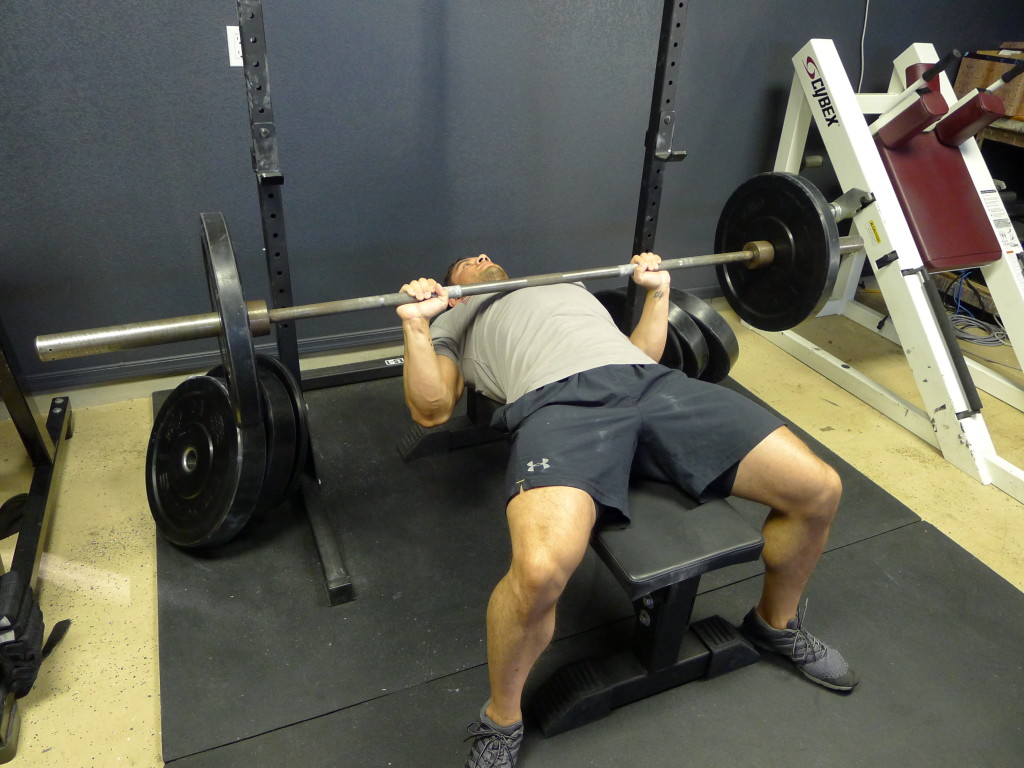
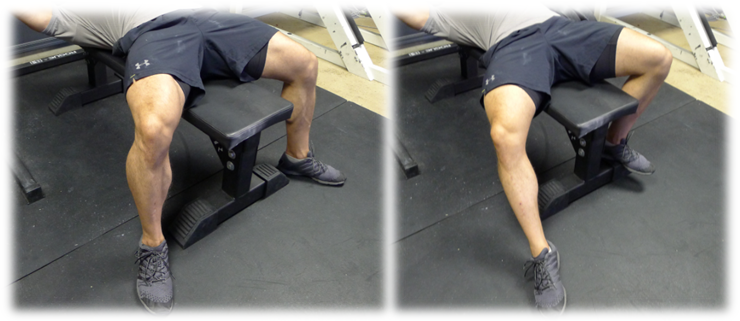




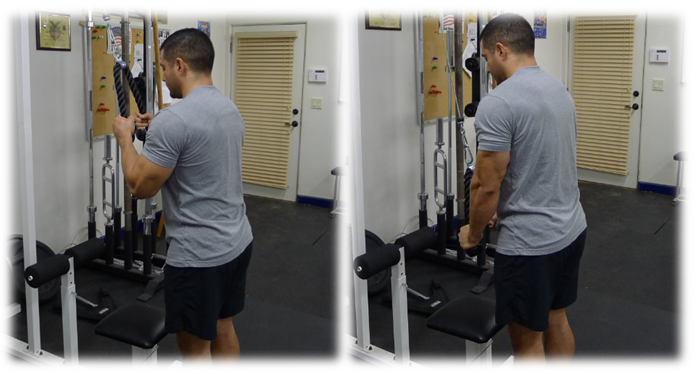
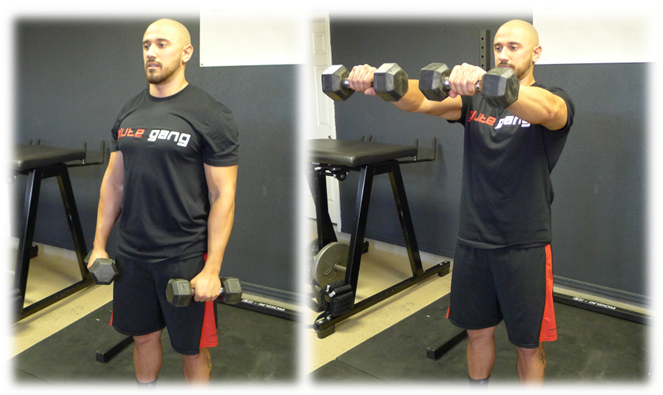
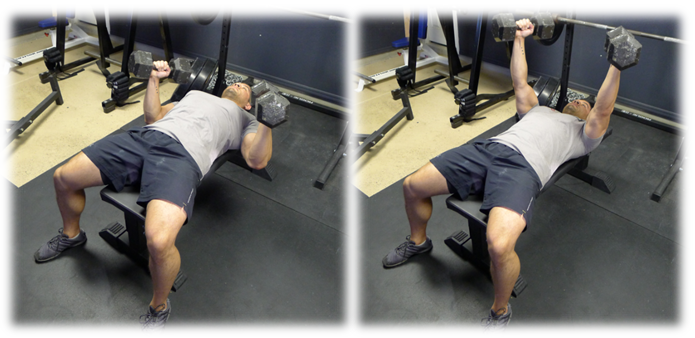





Thanks Bret,
Loved this article. My powerlifting coach stresses all of the same points, and my bench has increased astronomically since I started training with him.
All of these techniques really elevate the bench press from a simple “chest exercise” to a full body workout, and actually, the same principles apply (in my opinion) to the other main lifts as well. Tight body, optimal joint placement, proper breathing (big chest!), makes every lift a workout! Love it!
Thanks.
great article. as a novice, the best for me has been pause reps. it mightwell be my imagination, but everything after pause reps feels soooo easy
Thanks Bret! Loved this article! Working hard to increase my bench — this was super helpful in terms of cues for form and figuring out the best way to improve my numbers. 🙂
Hi Bret, very useful article. What do you think about doing this excersise with dumbbells? I personally feel more comfortable with the dumbbells because I see less demand on the shoulders (although I admit that my technique with the bar is not very good!).
Man, you have been cranking out some serious posts lately.
Makes me happy to see. =D
what would your prescribe for lifters that have trouble keeping the scaps posteriorly tilted throughout the movement? Also, what, if anything, would you change in this article for a powerlifting style raw bench?
Prone lying trap raises at the beginning of each session
Thanks! I did these at the END of the session after a bad bench session due to not being able to get tight enough. Next time I’ll definitely do them before.
Great post Bret. I also like to employ plyo-push ups as well to work both on push up work and for the added speed component as well. I’ve also recorded greater gains in reps from doing this both with myself and with my trainees. Once again great post. Thanks for sharing.
Your partner Brad Shoenfeld says to flair the elbows in his musle max book.
in the pics adressing scap position,the second pic should read,”poor lockout position with shoulders protracted”.Great article though.
I NEED this article. My bench is slow gaining. My deadlift increases every time but my bench just feels like hard work.
Bret,
Good article. However, I’d like to add a little to it.
Speed Work
Good point, there isn’t really much if any speed in the powerlifts. However, it is effective at increasing your bench press.
Cluster Reps
There is some research that has demonstrated that Cluster Sets are effective for power/speed movement.
While Cluster Sets can/do increase strength and size (dependent on the program), research by Dr Jacob Wilson has shown that a “Traditional Sets” (Cluster Sets Maintain Power Output During Fatiguing Exercise) are more effective at increasing strength and/or size.
Pyramid Sets
Anything below you top set is basically a warm up set. The problem many lifter have is they make their warm up sets a full blow workout. This kills you top set and to some extent defeats the purpose.
As you noted, “The last set is what will improve your rep max.” Too many over ambitious lifters forget this and max out on the warm up sets.
Bench Press More Now, Dr. Tom McLaughlin
One of the best book on the Bench Press was written by McLaughlin (Exercise Biomechanics, former Powerlifter).
Part of his research in the book can be found in a NSCA Research Journal article.
The principles of Bench Press training are some of those you have stated.
The book delves into some other interesting aspect of training the Bench Press.
Powerlifting Meet & Drag Racing Reaction Time
As you know, in a Powerlifting Meet, the bar must be paused on the chest prior to pushing the bar up.
Stretch Reflex
The stretch reflex can produce up to an 18% increase in power with some loads.
Research (Wison/Supertraining) has demonstrated that up to 50% of the stretch reflex is lost in one second. The stretch reflex is non-existent after a 4 second pause.
Thus, the longer the Bench Press is paused on the chest, the less power is produced in driving the bar up.
Doug Young’s Bench Press Reaction Time
One of the greatest Bench Pressers of all time, was Doug Young.
What Young, as well as most great Benchers do, was anticipate the “Press” signal.
By doing so, Young was able to elicit more of the stretch reflex. Young’s Bench at times was more like a “Touch and Go”.
At one meet, that I officiated at in the late 1970s, Young’s benched 260 kg/575 lbs in a T-Shirt.
However, Young beat the “Press” signal. The lifts was turned down.
Young took a 4th World Record Attempt with 277.5 kg/612 lbs. Young beautifully anticipated the “Press” command driving up the weight with room to spare.
Timing Is EVERYTHING
Learning to anticipate the signal was something Young practiced in training. As I previously stated, most great benchers usually anticipate the “Press” signal.
“Action Beat Reaction”
A great example of the difference in anticipating the “Start” signal is in…
Sport Science – Episode 3 – Reaction Time – Hillary Will (Drag Racing)
http://www.youtube.com/watch?v=RFBTBOwueyU
In this video, you find that Hillary’s reaction time is one thousandth of a second compared to the host two tenth of a second.
That meaning the Hillary would beat the host of the show in a quarter mile drag race by 2 car lengths.
McLaughlin’s “Touch and Go Reactive Training”
Using pauses in Bench Press training has it place.
However, so does “Reactive-Stretch Reflex” training when it come to exerting more force in coming off the chest.
Kenny Croxdale, CSCS
How much do ya bench, Bret?
Thank-you for your recent articles on Bench,Squat and deadlifts. Fantastic information. Started some small adjustments to technique that you suggested and have achieved PBs on all three. Just one question (and sorry if you have addressed this and I’ve missed it ) ….Is there ANY difference between how a chick should approach/attempt any of these big 3 exercises?? … or just go for gold and refine as needed? Regards from Candice.
Candy – no difference. With bench, many women have trouble lowering the bar “lower” on the chest (they like to flare and touch the chest up hight), and many women have trouble feeling their lats at the bottom of the bench. But in time it becomes habitual. More women than men appear to be hypermobile in the spine, so sometimes you need to teach them what neutral is to make sure they’re not hyperextending. Hope that helps! BC
I think I hit a bench max plateau and it’s really discouraging…. I use the ascending bench press workout method for 3 sets of 5 paused bench But I’ve been doing it for about 2 months and I can’t hit my bench press goal… I’m not sure if my grip is good and I do the form thing as best as I can but im not sure what my hold up… If you have any tips feel free to email and let me know I could use the advice
My bench sucks. I just can’t settle on one set up and one grip. I’m frustrated as hell.. Help
Stuck at 225 forever and ever
Thanks. I’m one of those people who has just gone to the gym and benched for quite awhile and that has been ok up to where I’m at now, which is about 145 for 4 or 5 reps. Some of the points you mentioned I already knew, and others I didn’t. I’m going to try and apply everything in your article over the next couple of months and see if it brings my bench up. I’d very much like to get up to 160 or so for 4 or 5 reps.
— Ann
Great article! Thanks so much.
Excellent article! I like the idea of floor press to shorten the range of motion Lately I have been performing a lot of partial rep bench presses but without a rack with pins it is difficult to know the depth of each repetition from one workout to the next. At least lying on the floor I would be able to ensure my ROM remains the same as I progressively add weight each workout. I have never seen floor presses performed in the gym and am a little concerned about drawing too much attention to what I am doing as I tend to train hard and go overboard.
HI Bret,
very good article. I especially like that you took the time to introduce all of the different repetition schemes.
Ever considered discussing programs like Smolov Jr ?
As one of the “freaks” you mentioned in your post with a 150kg bench press at 85kg bodyweight a tip for anyone who is starting out.
Keep it simple!
There is some great material out there. Pick what is most appealing to you and go to the gym and DO IT! The single most important influencer is quality volume to develop a good bench press. Stick in the 60 – 90% range and get them reps in.
Easy guide on how to bench press like a powerlifter:
http://www.marathon-crossfit.com/blog/bench-press-like-a-powerlifter
Best program (IMO) to break through bench press plateaus (Intermediate lifter upwards):
http://www.marathon-crossfit.com/blog/smolov-jr-review
All the best and stop my blog.
Pascal
Is this peer reviewed?